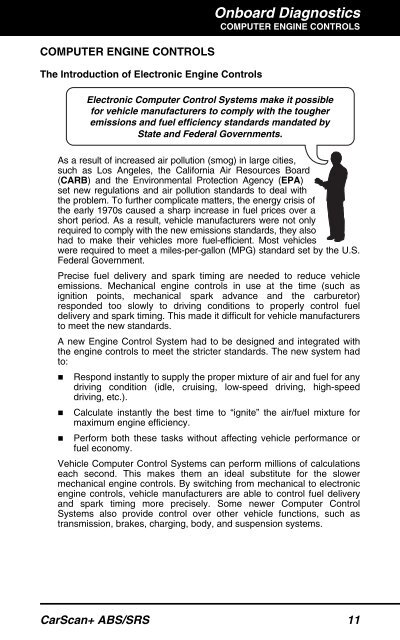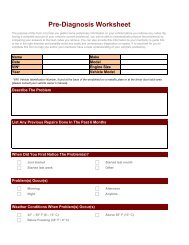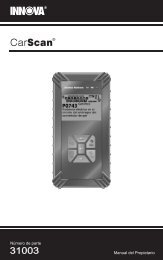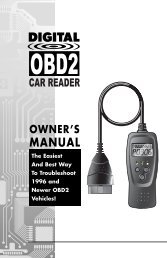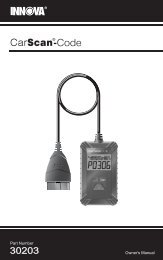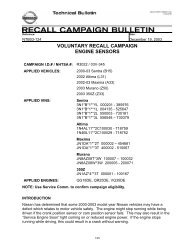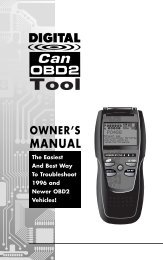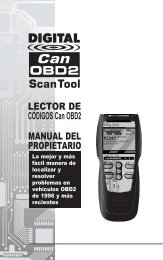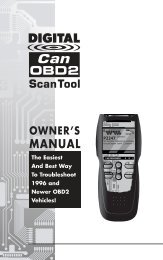31603 - Innova Pro
31603 - Innova Pro
31603 - Innova Pro
You also want an ePaper? Increase the reach of your titles
YUMPU automatically turns print PDFs into web optimized ePapers that Google loves.
Onboard DiagnosticsCOMPUTER ENGINE CONTROLSCOMPUTER ENGINE CONTROLSThe Introduction of Electronic Engine ControlsElectronic Computer Control Systems make it possiblefor vehicle manufacturers to comply with the tougheremissions and fuel efficiency standards mandated byState and Federal Governments.As a result of increased air pollution (smog) in large cities,such as Los Angeles, the California Air Resources Board(CARB) and the Environmental <strong>Pro</strong>tection Agency (EPA)set new regulations and air pollution standards to deal withthe problem. To further complicate matters, the energy crisis ofthe early 1970s caused a sharp increase in fuel prices over ashort period. As a result, vehicle manufacturers were not onlyrequired to comply with the new emissions standards, they alsohad to make their vehicles more fuel-efficient. Most vehicleswere required to meet a miles-per-gallon (MPG) standard set by the U.S.Federal Government.Precise fuel delivery and spark timing are needed to reduce vehicleemissions. Mechanical engine controls in use at the time (such asignition points, mechanical spark advance and the carburetor)responded too slowly to driving conditions to properly control fueldelivery and spark timing. This made it difficult for vehicle manufacturersto meet the new standards.A new Engine Control System had to be designed and integrated withthe engine controls to meet the stricter standards. The new system hadto:• Respond instantly to supply the proper mixture of air and fuel for anydriving condition (idle, cruising, low-speed driving, high-speeddriving, etc.).• Calculate instantly the best time to “ignite” the air/fuel mixture formaximum engine efficiency.• Perform both these tasks without affecting vehicle performance orfuel economy.Vehicle Computer Control Systems can perform millions of calculationseach second. This makes them an ideal substitute for the slowermechanical engine controls. By switching from mechanical to electronicengine controls, vehicle manufacturers are able to control fuel deliveryand spark timing more precisely. Some newer Computer ControlSystems also provide control over other vehicle functions, such astransmission, brakes, charging, body, and suspension systems.CarScan+ ABS/SRS 11


